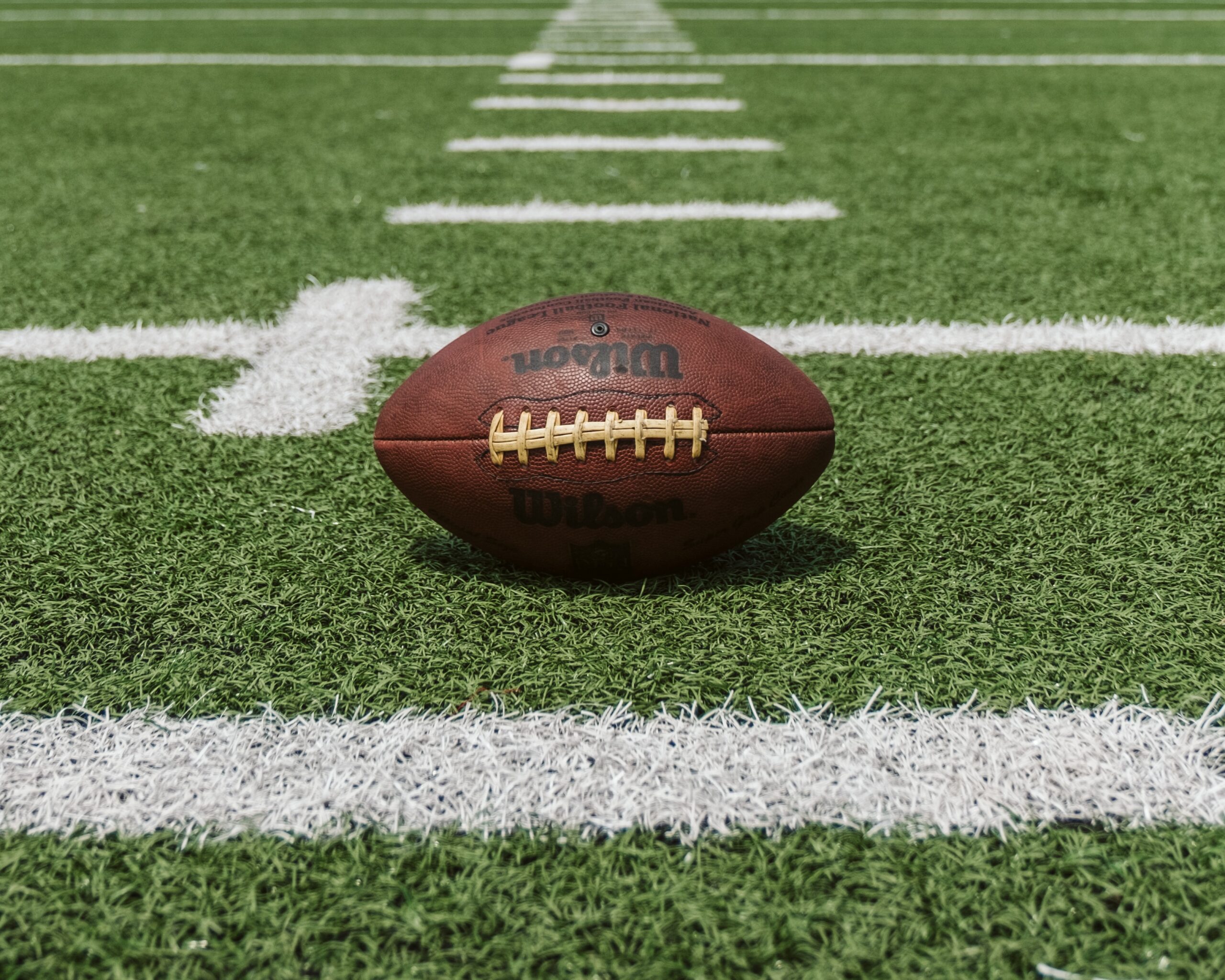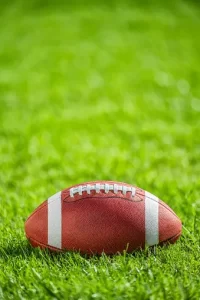When watching a football game or tossing around a pigskin with friends, have you ever stopped to think about the various components of the iconic American football?
One essential aspect of a football that often goes unnoticed is the laces, which serve a crucial purpose in handling and throwing the ball. This article will explore the number of laces on a football and provide a deeper understanding of their function in the game.
In the NFL, the number of laces on a football has varied over the years. Historically, the football had three or four laces, depending on the year it was created.
Contents
How Many Laces on a Football
A football’s laces are vital for grip and control when throwing or handling the ball. The number of laces on a football can vary depending on the level of play, such as high school, college, or the NFL.
In the NFL, a standard football has only one lace, which is made up of 16 lace holes and 8 cross stitches.
This lace helps players get a better grip on the ball for throwing, especially quarterbacks like Patrick Mahomes and Tom Brady. In college football, the laces are made of rubber and are molded onto the ball. The design and materials used in these laces serve the same purpose as NFL laces, providing grip and control to the players during the game.
For high school footballs, they must have either 8 or 12 laces, as specified by the National Federation of State High School Associations (NFHS) rulebook. These laces are evenly spread throughout the football and are required to end within 3 and 3/4 inches from each end of the ball. The length of the laces for high school footballs should be approximately 33 x 4 inches.
In summary, the number of laces varies based on the level of play:
- NFL: 1 lace with 16 lace holes and 8 cross stitches
- College: Rubber molded laces, varying in number
- High School: 8 to 12 laces, evenly spread on the ball
It is essential to remember that the main purpose of laces on a football is to ensure players have an optimal grip and control of the ball during gameplay, as required by the sport’s various rules and regulations.
Purpose of Laces in Football
Grip and Control
The use of laces on a football significantly enhances grip and control for the players. When throwing the football, a quarterback can use the laces to firmly grasp the ball, improving the accuracy and speed of their throws. This extra grip and control also allow players to execute specific spins and spirals on the ball, making it difficult for the opposing team to intercept or defend against it.
Furthermore, the laces also play a role when it comes to kicking the football, especially during field goals and punts. The laces offer a consistent contact point for the kicker, ensuring that each kick produces a predictable trajectory and distance.
Consistency in Performance
Another vital aspect of laces in a football is their contribution to consistency in performance. The presence of evenly distributed laces, typically eight or twelve laces for a high school football, ensures that the ball has a balanced and uniform shape. This standardization allows for predictable behavior and optimal aerodynamics during flight, which are crucial for both passing and kicking the ball.
Moreover, the consistency in performance provided by the laces ensures that players can develop and hone their skills with the ball, maximizing their potential on the field.
By practicing with footballs incorporating consistent lacing, players can establish muscle memory and perfect their techniques based on the expected behavior of the ball.
In summary, the presence of laces on a football not only contributes to improved grip and control for the players but also promotes consistency in performance. This helps players make accurate throws and kicks while enabling them to refine their techniques over time.
History of Football Laces
Evolution of Materials
In the early days of American football, the ball was made out of an inflated pig’s bladder, which was then covered with a leather skin, stitched together by laces. As the game evolved, so did the materials used in the ball’s construction. The pig’s bladder was eventually replaced by a rubber bladder, which was more durable and able to maintain the ball’s shape and air pressure more consistently.
The laces themselves also underwent a change in materials. Originally, the laces were made from the same leather as the ball’s skin. However, as the game developed and different levels of play emerged, variations in the materials used for laces became more common. Today, NFL footballs have laces made from a combination of heated and melted plastic pellets, while NCAA and high school footballs typically use rubber laces.
Changes in Design
The design of football laces has also evolved over time. Initially, the laces served as a functional component, keeping the leather skin of the ball stitched together. However, even though modern footballs no longer require laces for this reason, they have been retained on the balls for their practical use in helping players to grip and control the ball more effectively.
In terms of the number of laces on a football, a standard NFL ball has one lace with sixteen lace holes and eight cross stitches. On the other hand, NCAA and high school footballs can have varying numbers of laces, with some high school balls having up to 12 laces. These differences in design can have a subtle impact on the way the ball is thrown and handled by players at different levels of the game.
Maintenance and Replacement
Inspecting Laces
Regular inspection of the laces on a football is essential to make sure they are in good condition and to prevent any potential issues during gameplay. Checking the laces will require close visual examination to look for any signs of wear and tear, such as fraying, loose threads, or damage to the lace holes.
During inspection, ensure that there is adequate tension on the laces, making sure they are not too loose or too tight. Uneven tension can affect the shape of the ball, impacting its aerodynamics and overall performance during a game.
Steps to Replace Laces
If you discover that the laces on your football need replacement, follow these steps:
- Deflate the ball: Before attempting to replace the laces, deflate the ball to release tension on the laces and make it easier to work with.
- Remove the old laces: Carefully cut and remove the old laces, being cautious not to damage the lace holes of the ball.
- Thread the new laces: Take the new lace and thread it through the lace holes, starting from one end and working your way towards the other end in a zigzag pattern. Ensure that you are following the correct order of holes for your specific football, as this can vary depending on the regulations (e.g., NFL, high school, etc.).
- Tighten the laces: Once the new lace is threaded through all of the holes, pull the lace tight, making sure to maintain even tension across the entire length.
- Secure the ends: Once you have tightened the laces, tie a knot on each end to secure them in place, and trim any excess lace.
After completing these steps, re-inflate the football to the recommended psi, and it is ready for use again. Regular maintenance, inspection, and replacement of laces is key to ensuring the optimal performance of your football.



